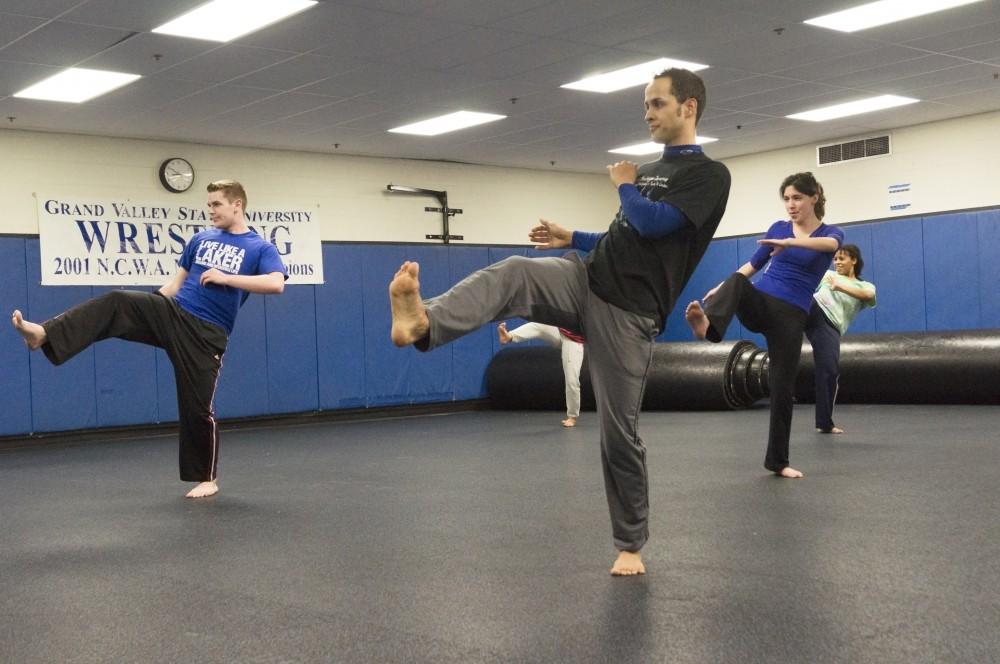Capoeira introduces Brazilian roots to GV

GVL/Lauren Loria Capoeira Mandinga group members practice kicks
Jan 29, 2015
From the 16th century to modern day, Capoeira has existed as an art form derived from African slaves in Brazil and has persevered through slavery and outlaw, evolving into a martial art that combines dance, acrobatics and music.
Capoeira Mandinga has been a student organization at Grand Valley State University for about nine years. Though membership has fluctuated, steady interest in the group has persisted.
“It’s a really diverse community that we have,” said Thomas Braganca, president of Capoeira. “Capoeira is a lot of different things to a lot of different people. It’s a dance, it’s a martial art, it’s culture, it’s music…We have such a crazy combination (of members). We’ve had ballroom dancers, break dancers and martial artists.”
Braganca had no previous experience in capoeira or anything similar prior to joining the group, and he said that many of the group’s members are the same way.
However, there are still those in the group who do have past experience with Capoeira. Gabe Hessenthaler, the financial officer for the group, has been practicing Capoeira since he was 14 years old.
Capoeira is similar to other martial arts in the sense that members of the group go through different chord colors as they progress through levels; there are chord ceremonies, called batizado, where each member’s progress is recognized.
Capoeira members perform what they call ‘demonstrations’ which are un-choreographed routines set to music where two group members perform complementary sequences that often result in the look of fighting or dancing. The mixed heritage of Capoeira lends itself to the end result of the demonstrations.
Braganca serves as the instructor, planning the sequences and putting them to music.
Capoeira members perform demonstrations at different events on campus, usually hosting them a few times per year. Most recently, they could be seen at the Belly Dance Club’s Winter Festival. Capoeira is active in their own community as well, traveling to Detroit every four weeks to visit and train with other Capoeira groups.
Every year, GVSU’s group aims to attend an annual three-day event held in January in Rochester, NY called “Eat, Sleep, Capoeira.” With help from fundraising, many group members were able to attend the event where they met with other Capoeira groups, attended workshops and learned new styles of dance.
“Community is the biggest part of being in Capo,” Braganca said. “It’s meeting a lot of really interesting, really cool people.”
While Capoeira may look intimidating, Braganca said is quite the opposite. He encourages anyone interested in learning more about the group to come out to one of their three weekly trainings.
“There’s a lot of different things that appeal to different people,” Hessenthaler said. “There’s the music side, the physical side and the cultural side.”
The first semester of membership to the group is free, and subsequent semesters are $40.
For more information about the group, visit their OrgSync page at
www.orgsync.com/62984/chapter or their Facebook page, GVSU Capo.






















